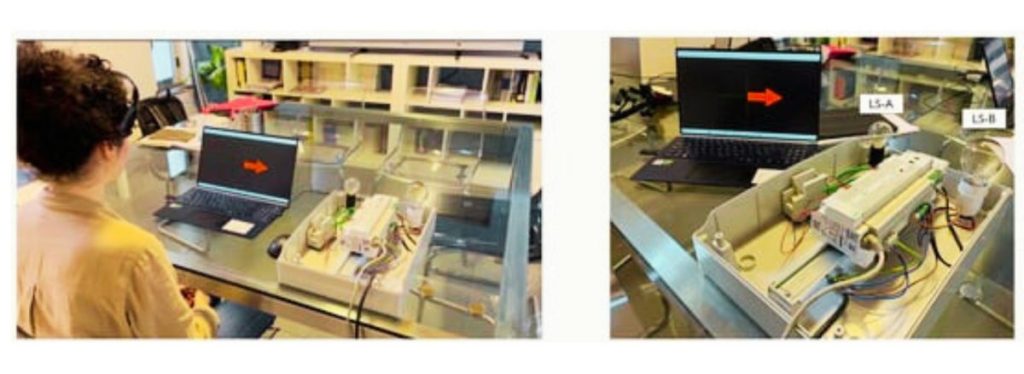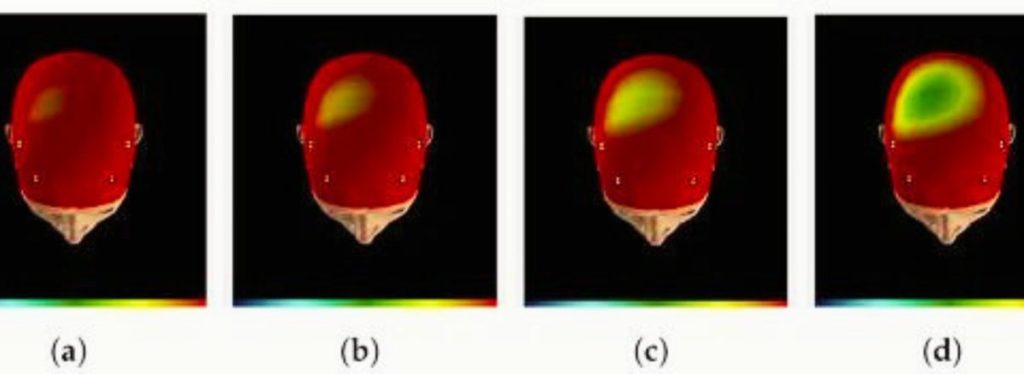The human brain is amazing, with its complex network of nerves sending electrical signals that control everything we do and think. Lately, scientists and tech experts have come up with a really futuristic idea: smart homes that you can control just by using your thoughts. Imagine being able to turn on lights or change the thermostat without lifting a finger – just by thinking about it. This idea used to be something out of a sci-fi movie, but now it’s becoming real, all thanks to some really impressive advances in Brain-Computer Interface (BCI) technology.
A new study, published by the Multidisciplinary Digital Publishing Institute on July 18, 2023, has introduced a novel method for automating smart homes using signals from the brain. Instead of using fancy gadgets, this method taps into how your brain works when you think about moving your hands. By picking up on these brain signals through electroencephalogram (EEG) readings, researchers have come up with a way to turn them into commands for controlling things in your home.
How the BCI technology works

The BCI system uses EEG signals to automate smart homes. This system records EEG signals through harmless scalp electrodes, which are then made stronger and cleaned up. The signals are turned into digital data and prepared, including picking out important features using wavelet classifiers or Morphological Component Analysis (MCA) to spot blinking. Then, machine learning programs analyze these features to figure out what the user wants to do, turning it into commands that control household devices through a local server linked to the Internet of Things (IoT). This means even people with trouble moving can interact with their surroundings just by using their brain waves.
This system mostly depends on motor imagery (MI) signals, where people imagine moving without actually moving their bodies. By using techniques called Regularized Common Spatial Pattern (RCSP) and Linear Discriminant Analysis (LDA), the EEG data linked to these imagined movements are studied and sorted. This allows users to control things just by thinking about them. Essentially, it creates a direct link between the brain and devices, bypassing the need for things like switches or remote controls.
In the study, participants took part in motor imagery (MI) training sessions while their brain activity was recorded using the Emotiv EPOC X headset. They were strictly instructed to stay concentrated and attentive during the MI training session to ensure precise and trustworthy outcomes. They were then asked to imagine moving their left or right hand when shown visual cues on a screen. The brain signals recorded through EEG were then analyzed using various filtering and data processing techniques, including RCSP and LDA, to extract useful information.
Devices talk to each other in smart homes

One interesting aspect of this research is how it combines the Motor Imagery-based Brain-Computer Interface (MI-BCI) system with the KNX protocol, a standard way for devices to talk to each other in smart homes. This combination makes it easy to control things like lights using just your thoughts. The study also shows that it’s possible to control two devices at once and MI-BCI systems could make smart homes more accessible and efficient.
MI-BCI systems pick up brain signals linked to imagined movements, which are then analyzed to understand what the user wants to do. The technical process involves capturing EEG signals, improving them, and extracting key features using algorithms like and LDA. These algorithms identify the imagined actions, which are then translated into commands to control devices.
The KNX protocol, a widely used standard for both commercial and residential building automation, ensures smooth communication between different gadgets. With this setup, users can control multiple devices simultaneously, such as adjusting lights and temperature, just by thinking about it. In the study, the EMOTIV helmet was used to record EEG data, and OpenVibe was employed for signal processing. The results showed that the system effectively controlled two light bulbs, indicating its potential for handling more complex tasks in smart homes.
Are thought-controlled smart homes a reality?

The results from the study show that the new method works well, with participants doing a good job during both practice and testing. The system works reliably in understanding what users want and carrying out their commands.
While this research is a big step forward in thought-controlled smart home systems, this also means dealing with the changes in daily brain signals. This includes making BCI systems better at adapting to differences in EEG signals from person to person. These signals can vary because of things like stress, tiredness, or even our natural body rhythms. To tackle these challenges, researchers are looking into smart algorithms that can adjust to these changes, so the system works well all the time.
Besides, making the training process easier is important for more people to use these systems. Right now, learning to use BCI systems takes a lot of time, which isn’t practical for many users. So, coming up with simpler ways to train people, maybe using machine learning to speed things up, is a big focus. This might mean making the setup process simpler or making training more fun with games.
Controlling multiple devices at the same time is also a big goal. Although some progress has been made, it’s still tough for users to manage many appliances smoothly and accurately. Researchers say they are working on smarter BCI setups that can understand more complex commands, letting people control different devices in their smart homes all at once. Being able to control multiple devices together is key to making smart homes easy and efficient to use.
Final words
Indeed, there have already been several attempts in the development of thought-controlled smart homes. Take, for example, a project led by Eda Akman Aydin at Gazi University in Turkey. They built a system in 2015, enabling humans to use their thoughts to control various home devices like the TV, lights, and phone. This system also relied on an EEG cap to pick up brain signals called P300, which arise when someone intends to take action. These signals are then translated into commands that the smart home gadgets can carry out.
We are now a decade ahead of Akman’s project. And the day when thought-controlled smart home systems come out of the lab and into real life could make life amazingly easier for everyone, from people with disabilities to regular users looking for more convenience. The potential uses are endless and only limited by our imagination.
- AI-Powered PCs: Overhyped Trend or Emerging Reality? - August 21, 2024
- Princeton’s AI revolutionizes fusion reactor performance - August 7, 2024
- Large language models could revolutionize finance sector within two years - March 27, 2024


